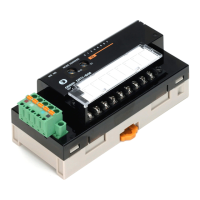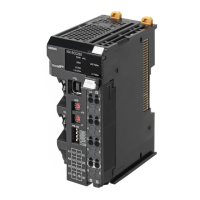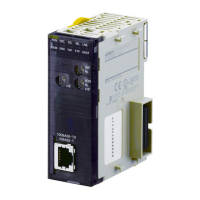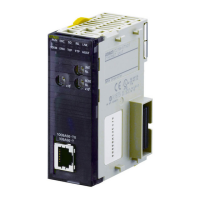175
Auxiliary Area and CIO Area Allocations Section 5-3
Note The flags will also be initialized at the following times: When the operating
mode is changed between PROGRAM and RUN or MONITOR modes and
when the Board or Unit is restarted. If an error flag turns ON, remove the
cause of the error and then reset the error indication from the Programming
Console or other Programming Device.
Error Codes
The contents of the error codes are shown in the following table.
Repeat
Counter Set
Value
Board:
CIO 1914 bits 08 to
15 (port 1)
CIO 1924 bits 08 to
15 (port 2)
Unit:
n + 14 bits 08 to 15
(port 1)
n + 24 bits 08 to 15
(port 2)
The number of times a step is repeated is set
in these bits.
Startup
(see note)
When step
starts
When
sequence
starts
Repeat
Counter
Present
Value
Board:
CIO 1914 bits 00 to
07 (port 1)
CIO 1924 bits 00 to
07 (port 2)
Unit:
n + 14 bits 00 to 07
(port 1)
n + 24 bits 00 to 07
(port 2)
The repeat counter variable N is set. The
value is cleared when the sequence execu-
tion starts, when the STUP(237) instruction
is executed, and at restarts.
The present value N varies according to the
method used to initialize the value. For
resets, the variable N is set to 0 when the
step is started, and the step is executed
according to the set number of times. For
holds, the variable N for the present value is
held when the step is started, and the step is
executed according to the set number of
times.
If the Repeat Counter Setting Value is set to
read word R (see note), and 0 is read, then 0
will be stored and this step will be skipped
(the next process setting will be ignored),
and the sequence will move to the next step
(+ 1). For details, refer to the CX-Protocol
Operation Manual (W344).
Startup
(see note)
When
repeat
counter is
refreshed
When
sequence
starts
Name Address Meaning Timing
Initialize ON OFF
Code Error contents Protocol macro
execution
0 No error Executed
2 Sequence No. Error
The sequence number specified by the
PMCR(260) instruction does not exist in the Board
or Unit.
Not executed
3 Data Read/Write Area Exceeded Error
When data is written or read to the CPU Unit, the
specified area range was exceeded.
Execution stops after
the error occurs.
4 Protocol Data Syntax Error
A code that cannot be executed occurs while the
protocol macro was executed. (Example: A header
occurs after a terminator.)
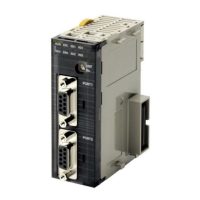
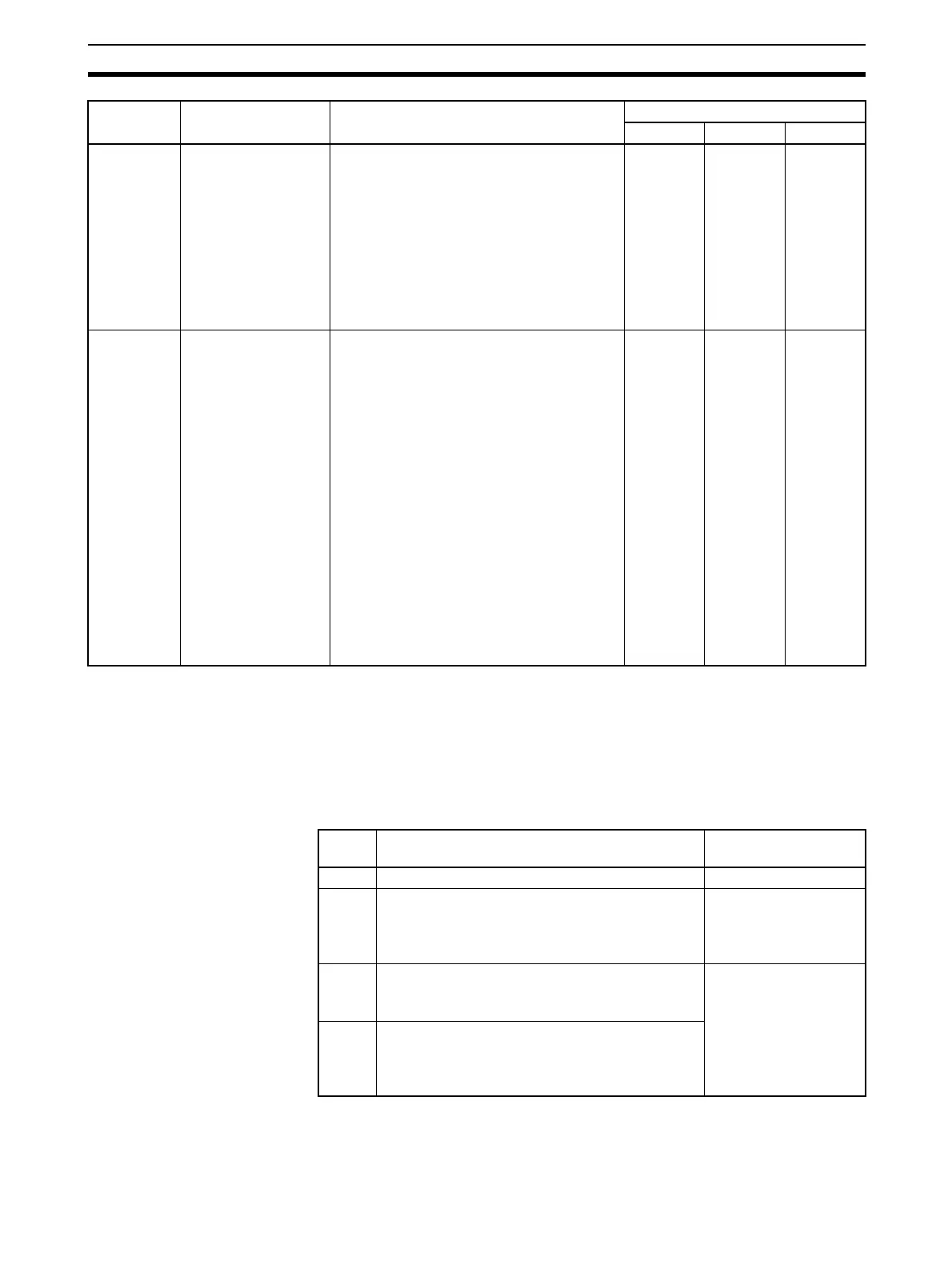